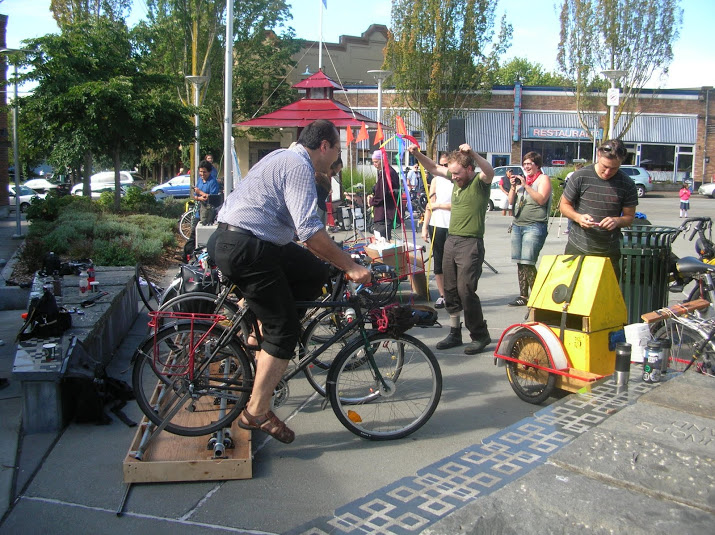Movable Party is a bike-powered celebration of the vibrancy and safety of life in public spaces. Inspired by Nakashi, an itinerant musical practice rooted in Taiwan’s street culture, we take a “high-tech, low-tech” approach to construct a human-scale generator. We are working with partners from Occidental College, The Knowhow Shop, The Bike Oven, Flying Pigeon, with the support of C.I.C.L.E., CicLAvia, and the ParTour project from USC’s Annenberg Innovation Lab and Metamorphosis Project, to design, fabricate, and implement a unique interactive media system powered by bicycles. We aim to bring together local communities, and to translate the spatial fluidity and technological hackery of Taiwan’s street music performance into public spaces in Los Angeles. Our first performance, an interactive DJ event, coincided with CicLAvia on Sunday April 21, 2013. Subsequent performances have taken place at the NELA Riverfront Collaborative event, Occidental College and Friends of The LA River. We’ve also joined the Bodacious Bicycle Babes for DanceLAvia, providing booty-shaking beats for the dismount zones at CicLAvia.

Technical Description
Movable Party relies on audience participation to provide electrical power for the performance. Three to four bicycles, fitted with generator hubs, will stand to the side of the stage. A power conditioner will combine the power output from each bike and convert it to clean, green, AC power for our equipment. Josef’s last pedal powered event, the Seattle Bicycle Music Festival, used a single generator mechanically connected to five bicycles. This allowed the audience to volunteer not only their energy, but also their steeds, as the cycles needed no modification to interface with the generator. To make the system interactive for cyclist and audience participation, we will utilize Arduino, an open-source physical computing platform. We will embed sensors on bicycle’s rear wheel to detect rotational speed. Additional sensors on the saddle and handlebars will detect the movement of volunteer riders. This data will be transmitted to a computer through an Arduino microcontroller, where it will be used to control custom music software. With this setup, each rider will be able to control elements of the sound while at the same time generating electricity for the entire system.

 Home
Home